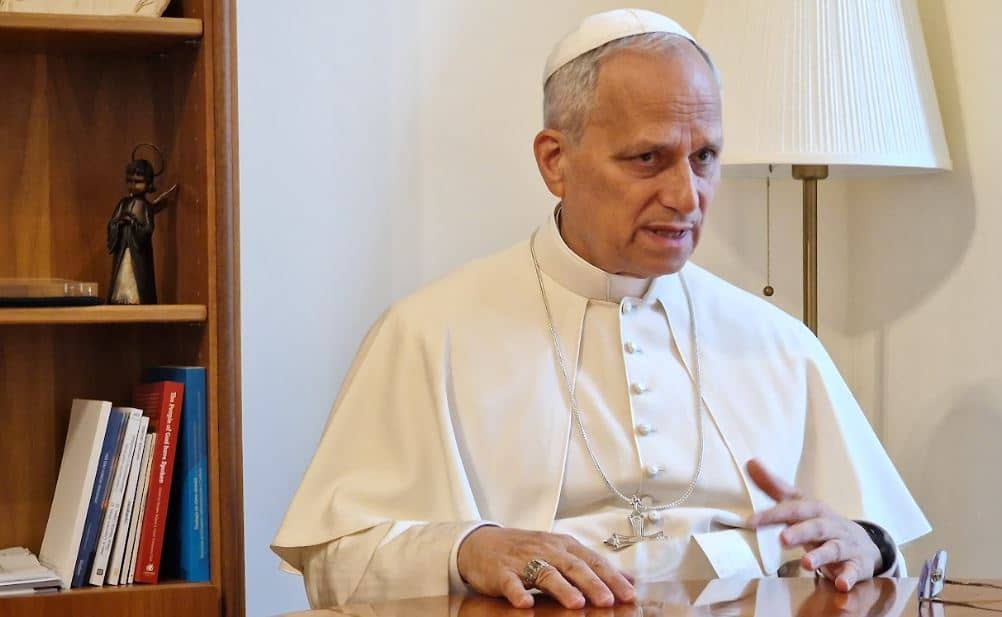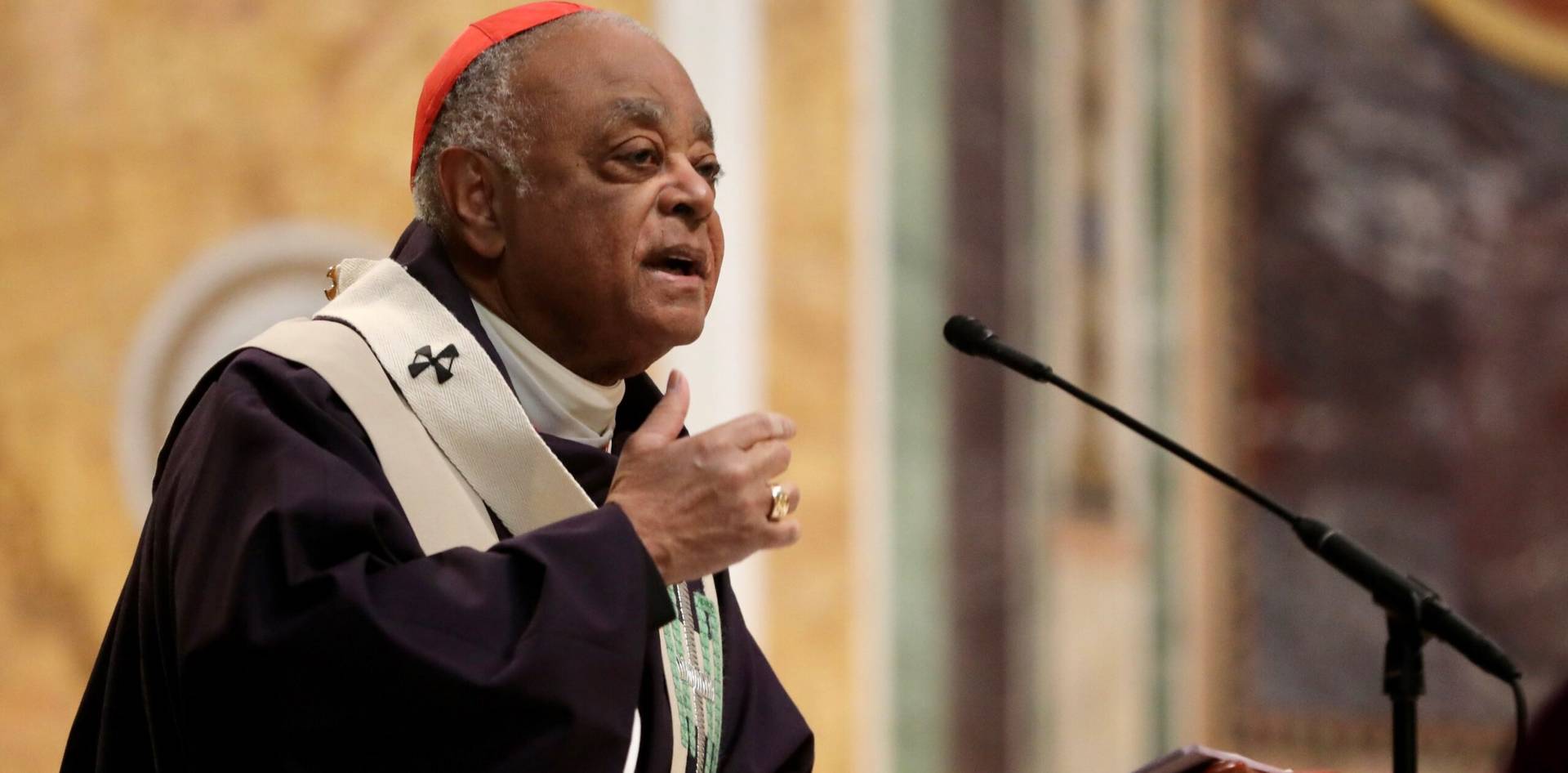[Editor’s Note: Michael Pakaluk is a professor of ethics and social philosophy in the Busch School of Business at the Catholic University of America in Washington, D.C., and a member of the Pontifical Academy of St. Thomas Aquinas. He earned his undergraduate and doctoral degrees at Harvard and studied as a Marshall Scholar at the University of Edinburgh. An expert in ancient philosophy, he has published widely on Aristotelian ethics and the philosophy of friendship and done groundbreaking work in professional ethics. His previous books include Other Selves: Philosophers on Friendship, The Appalling Strangeness of the Mercy of God, and The Memoirs of St. Peter: A New Translation of the Gospel according to Mark. He spoke to Charles Camosy about his latest book, Mary’s Voice in the Gospel According to John: A New Translation with Commentary.]
Camosy: Can you share a brief story of how this book project came about? Why did you think it was important to devote so much time to this particular topic?
Pakaluk: Every good I have in my life comes from an encounter with Christ. I figure, then, if I can introduce others to the Lord, or help them grow closer to Him, then I am doing a very great good. Everything else that you and I care about – the life of the family, justice in society, care of our common home – all of that radiates out, and has historically radiated out, from an encounter with Christ.
But how can I best do this, in my facts and circumstances? Well, I am skilled as a translator and interpreter. Why not, then, besides writing works on Aristotle or St. Thomas, apply those skills to the Gospel texts? In fact, like other Christians, I spend some time each day reading the Gospel, for me usually in Greek. When I would do so, it often seemed that I was “seeing” things, in the details and emphases of the Greek text, which others weren’t capturing. Therefore, I thought, if I am doing this anyway, why not write a book about it and share it with others?
This is how I reasoned. I picked Mark to begin, because it was the shortest Gospel, and the first Gospel I studied as a new convert in college. That book, The Memoirs of St. Peter, written on the thesis of the ancient Church that Mark was Peter’s “interpreter,” was a widely appreciated. So I resolved I would follow with books on the other three Gospels.
But why John’s Gospel next? Strangely, because of a poem of Robert Frost, which I had lately come to know – sonnet entitled “Never Again Would Birds’ Song Be the Same,” which explores the conceit that Eve’s voice, lifted in the air by her song, had mixed with the songs of birds, so that it could still be discerned in birds’ songs today. I was astonished by the beauty of this poem, memorized it, and contemplated it frequently. In my imagination, by some kind of alchemy of piety, Eve transformed into Mary and the birds into the evangelists. This led me to wonder, had the voice of Mary mixed with John’s account – because after all she had lived with him many years?
Such is the “why” of this book. As to the “how” – I look at my printed book today and thank the COVID lockdowns for it. Last year at this time, I was at a conference in Brussels one weekend; lecturing in Portland, Oregon the next; and on pilgrimage in Jerusalem the next. And the rest of my spring was booked similarly! It was insane. However, when the lockdowns started, all of my travels were cancelled. I found myself with my family in a cabin in the north mountains of New Hampshire. Taking advantage of this great gift of focused time, I wrote the book in March and April, two months.
Can you address upfront the issue of “turf”? I’m guessing you’re going to face reviews – or even snarky Twitter responses – from some theologians trained in Biblical interpretation that will be skeptical just based on the fact that you are trained as an ethicist and social philosopher.
My book is a trade book not an academic book. It is aimed at the general educated reader. I do not engage with academic secondary literature. If these academics dismiss me, frankly, that’s fine with me. The book is not intended for them or their world.
Not that I don’t know their world. I’ve spent hundreds of hours, in my life, in the Harvard Divinity School library, pouring over books in the form-criticism, redaction-criticism, and source-criticism of the Bible, from my first years as a convert to Christianity in college. But these approaches do not answer to what I think is most important.
Although in the classroom now I teach sexy things like the ethics of naked credit default swaps, “by trade” I am an Aristotle scholar. Something one needs to recognize about Aristotelian scholarship is that it represents a kind of pinnacle of scholarship. To excel at it, one needs to master more than two thousand years of commentary, in several languages, living and dead, by some of the greatest minds in the Western tradition, on some of the most difficult questions – and then find something new to say, which is additionally true. That’s not easy.
It’s natural to move from classical scholarship to Biblical scholarship, to apply tools from the one to the other – which is how historico-critical studies of the Bible began anyway. The great John Rist is an example of someone who has done so in our day. His book on the independence of Matthew and Mark has been an inspiration for me. In an earlier time – I mean, Oxford in the 19th century, at the time of Newman and the Oxford movement – Bible scholars were expected to be good classicists first. I feel great kinship with those scholars. They had remarkably good and balanced judgment, which I wish to imitate.
I chuckled at your mention of “training.” No one gets “trained” in the Harvard philosophy department. They throw you into water, and you have to learn how to swim. You study what you find interesting. For me, at that time, it was the family of problems which occupied Frege, early Russell, and early Wittgenstein, the “philosophical logic” of “early analytic philosophy.”
Yes, eventually I fell in love with Aristotle, studied his corpus from beginning to end, and went on to write a Clarendon Aristotle volume on books VIII and IX of the Nicomachean Ethics. There, I suppose, one could speak of a kind of training. When I worked on that book, under the editorial oversight of Lindsay Judson and John Ackrill, I was schooled thoroughly in the difficult craft of producing scrupulously accurate but natural English renditions.
Ackrill in particular was a great master of this. We exchanged dozens of pages of notes and hours of recorded comments, back then, on cassette tape. That was a training, indeed—in the art of translation.
Let’s get into the substance of what you’re arguing in the book. I’m sure some readers, based on their memory of Mary’s speaking in the Gospel of John, will wonder how one could get enough material to write a 300-page book. How are you envisioning her voice being present in this Gospel?
The central idea of the book is the human truth that we are inevitably shaped by people we love and are close to. This shaping is not deliberate and may be hard to recognize. It takes the form of henceforth seeing things and wanting to see them as they would. The phenomenon is very clear in my own life. For instance, I was a colleague of Roger Scruton for two years: now, whenever I engage a work of art, I am in part thinking about it in the way I would if Sir Roger were beside me and looking at it with me. My colleague, Andreas Widmer, was a Swiss Guard and wrote an entire book on how simply a couple of years in the close company of St. Pope John Paul II changed how he views everything.
If this is true as regards savants and saints we know, then how much the more so must it be true as regards the Mother of God, on the part of John, who appears in Scripture as someone very keen to love, and to attach himself to those he loves! But Our Lord even gave Mary to him as his Mother. From the tradition we can suppose that Mary lived with John as many as thirty years. But it makes no difference, as one year or thirty days would surely have sufficed.
One must be careful about method. It would be misguided, I think, to attempt to “demonstrate” Mary’s influence from scraps of evidence. In any case the fact of influence is actually not that important! What is important are the new things we can see about Our Lord and John’s Gospel, when looking for signs of such influence. We can get at these just as well through what I deem a “Bayesian” approach, which is to assume robustly that Mary did inform John’s outlook, in the human way I have described, and then ask what characteristics of John’s Gospel we would want to ascribe to that “informing,” if the hypothesis were true. Proceeding in this way, if we find an abundance of such features, then we might even arrive at an “accumulation of probabilities,” as Newman deems it in his Grammar of Assent, which can amount to a sort of proof.
This then raises the question: what do we look for? Well, we note the distinctive ways in which Mary was different from John. She was a virgin, a mother, a daughter of God, a handmaiden, and a spouse. John was none of these things – although sometimes he is referred to, rightly, as the “virgin” saint. Each of these roles will shape who someone is, and how she sees things. Therefore, if there are passages, details, or modes of selection, which plausibly are attributable to someone as having one of these roles, then, by our method, we count them among the influences we have gleaned.
The task is an extremely interesting project for a scholar. But I must say that I do not think I could have even undertaken it, but for twenty years of conversations with my wife (herself a professor at my university) on the “feminine genius” seen in such figures as Edith Stein, Catherine of Siena, and Sigrid Unset. There is a pleasing mirroring effect in my book as a result: I wish to write about John as reflecting Mary’s influence, and I certainly write as reflecting my wife, Catherine’s, influence.
Is this something we miss today as compared with how the ancient Church would have read this text?
I think that what the early Church did as a matter of course, as second nature, we need to recover deliberately, and with effort. In writing the book, for instance, I became deeply impressed with the close relationship between Mary’s role as Theotokos and a due appreciation of the mystery of the Incarnation. But for the early Church, this was second nature. Think of it: immediately after the Church had settled disputes about the divinity of Christ at Nicaea, it wanted joyfully to affirm the truth about Mary as Mother of God. Do we have the same instincts?
For the early Church it was obvious, too, that to become a Christian was to join a household, not simply the family which is the Church, but also the extended Holy Family, of which Mary is the Mother.
It is beyond the range of this book, but it needs pondering, too, the extent to which juridical conceptions of salvation have tended to remove, from our reception of the gospel, the distinctive manner in which a woman receives the gospel—because the juridical is by definition impartial and at arm’s length.
I mention “reception” of the gospel because the mistake made by some forms of Christian feminism is to attempt to change some aspect of the Church’s teaching, when what needs to change, I believe, is rather our manner of receiving the Church’s teaching. Here is a simple example that makes the point. I have found that women naturally understand the reception of the Eucharist at Mass as a participation in Mary’s role as carrying the Christ within her when pregnant. But men hardly ever think of the Eucharist in this way. And yet they can, and arguably they should. The more difficult task is for us to receive Our Lord’s teaching better, like fertile soil.
There are several important insights that come from recovering this ancient insight, but what’s one central insight you can discuss here as a kind of preview?
I think it is absurd that Mary did not know from the beginning that she was carrying God Incarnate. God would not have attained her free consent, in his “marriage proposal” which was the Annunciation, if she did not know this, and she would have been both instrumentalized and at risk of sacrilege – like a woman carrying a Eucharist in a pyx while supposing it was a piece of bread. But, if so, then she spent thirty years contemplating the divinity of Christ, before he even began his public ministry. The disciples in contrast spent those three years with Christ constantly bewildered by him. It’s not at all implausible, then, that Mary would notice things that they did not, and be prepared to remember them, such as unusual statements of the Lord which, looked at in a certain way, could be construed as invocations of the divine name, “I AM.” Well, we can leave it at that. As you know, there is much, much more.















